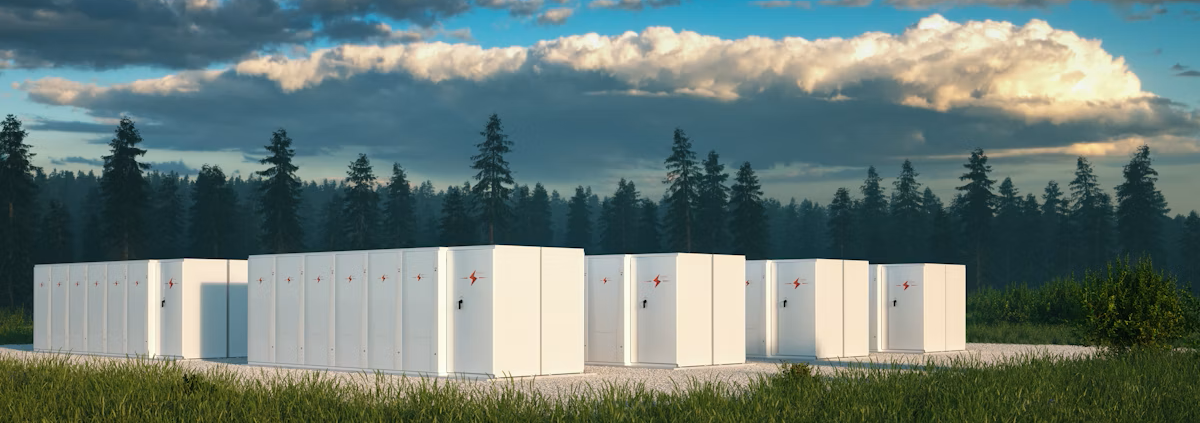Utility-Scale Battery Storage in the U.S.: Market Outlook, Drivers, and Opportunities in 2025 and Beyond
Introduction
As the U.S. accelerates its transition toward a cleaner, more resilient energy grid, utility-scale battery energy storage systems (BESS) are emerging as a critical enabler of this transformation. These large-scale storage installations—often deployed by utility companies, independent power producers (IPPs), and grid operators—are playing an increasingly vital role in balancing supply and demand, integrating renewables, and enhancing grid reliability.
In this article, we’ll explore the current state of the utility-scale battery storage market in the United States, highlight the forces driving its growth, discuss key application scenarios, and provide insight into the challenges and opportunities on the horizon.
The U.S. Utility-Scale Battery Storage Market: An Overview
The utility-scale storage market in the U.S. is experiencing unprecedented momentum. According to the U.S. Energy Information Administration (EIA), installed utility-scale battery storage capacity surpassed 15 GW in 2024 and is projected to more than double by 2026, with significant contributions from California, Texas, and Arizona.
Several macro trends are propelling this growth:
- Decarbonization mandates at the federal and state levels
- A sharp increase in renewable energy generation, particularly solar and wind
- The passage of the Inflation Reduction Act (IRA), which includes long-term investment tax credits (ITC) for standalone storage
- Advancements in lithium battery technology, including higher energy density and better cycle life
- Falling system costs driven by global scale and domestic manufacturing incentives
Utility-scale battery storage is no longer a niche solution—it’s becoming foundational infrastructure.
What’s Driving Utility-Scale Storage Demand?
- Grid Flexibility and Renewable Integration
As renewable energy penetration grows, so does the volatility of electricity supply. Batteries help smooth this variability by storing excess power during peak generation and dispatching it during demand surges. This is particularly critical in regions like California and Texas, where solar and wind now account for a significant portion of the energy mix.
- Peak Shaving and Load Shifting
Utility-scale BESS can reduce the need for costly peaker plants by shifting energy use from high-demand periods to off-peak hours. This allows grid operators to optimize generation resources and reduce carbon intensity.
- Frequency Regulation and Ancillary Services
Large-scale storage systems offer ultra-fast response capabilities that are ideal for grid services like frequency regulation, voltage support, and spinning reserve—helping utilities maintain grid stability even in the face of disturbances or demand spikes.
- Resilience and Black Start Capabilities
BESS enhances grid resilience by acting as backup power sources during outages or emergencies. Some installations are designed with black start functionality, enabling them to help restart power plants or substations in the event of a total system failure.
Key Application Scenarios
Utility-scale storage is being deployed in a variety of configurations and business models:
- Co-located with renewable energy projects (e.g., solar + storage farms)
- Standalone grid assets providing capacity and reliability services
- Transmission and distribution deferral, reducing the need for costly grid upgrades
- Virtual Power Plants (VPPs) aggregating distributed assets for market participation
The flexibility of BESS allows utilities and IPPs to tailor systems to their operational and financial goals.
To explore real-world lithium-based utility energy storage solutions, visit our dedicated product page:
👉 Utility Battery Energy Storage Systems
Technology Landscape
While lithium-ion batteries—particularly LFP (LiFePO₄)—dominate the market, other technologies are emerging for specific use cases, including:
- Flow batteries for longer-duration storage
- Sodium-ion and iron-air batteries under R&D
- Hybrid systems combining different chemistries or integrating with hydrogen
Nonetheless, lithium-based systems remain the most commercially viable and scalable solution for utility-scale deployment today.
Challenges to Address
Despite rapid growth, several challenges remain:
- Interconnection delays and long permitting timelines
- Supply chain constraints for battery cells and critical materials
- Safety concerns and compliance with fire codes (e.g., NFPA 855, UL 9540A)
- Revenue uncertainty in markets with limited regulatory clarity or underdeveloped ancillary services pricing
Addressing these issues will require collaboration among developers, regulators, technology providers, and utility stakeholders.
Future Outlook: Where the Market Is Headed
Looking ahead, the utility-scale storage market is poised for continued expansion, driven by:
- More aggressive decarbonization targets (e.g., 100% clean electricity by 2040–2050 in some states)
- Higher electricity demand from electrification of transport and industry
- Greater grid digitization, enabling advanced dispatch and control
- Innovative financing models, including energy-as-a-service and storage PPAs
As storage becomes more intelligent, modular, and cost-effective, it will evolve from a support asset to a strategic pillar of grid operations.
For energy professionals, project developers, and utility planners, partnering with experienced battery suppliers usa is crucial to navigating this evolving landscape with confidence.
Conclusion
Utility-scale battery energy storage systems are no longer optional—they are an essential investment for any grid aiming to meet 21st-century energy demands. Whether you are planning a renewable energy project, modernizing grid infrastructure, or seeking ways to improve energy reliability and cost-effectiveness, utility-scale BESS offers a scalable, flexible, and future-proof solution.
As the market matures and policy support strengthens, now is the time to evaluate your utility storage strategy—and choose the right technology partners to support long-term success.


